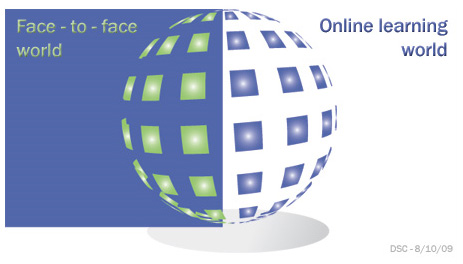From DSC:
The idea of a learning hub — where some of the learning content is accessed electronically and where some of the learning takes place in a face-to-face manner — seems to be picking up steam. Conceptually, it makes a huge amount of sense, especially if it’s done well. It combines the best of online learning and face-to-face learning. Though not new, blended or hybrid learning, has often been said to be the Holy Grail of learning. So some of the learning could be accessed remotely — via a live videoconference or via a previously recorded lecture — and some of the learning could take place around a table.

With that in mind, it was interested to see the following postings:
- N.Y. Public Library Plans Face-to-Face ‘Classes’ for MOOC Students — from chronicle.com by Steve Kolowich
Excerpt:
In a pilot program with Coursera, the New York Public Library plans to organize meet-ups at which people taking massive open online courses can gather and discuss the courses with help from “trained facilitators.”The partnership is part the MOOC company’s effort to build an infrastructure for in-person learning around its free online courses. Research has suggested that MOOC students who receive offline help earn higher scores on their assessments.
. - New Learning Hubs Locations Hosted by The New York Public Library and Seven Other International Partners– — coursera.com
Excerpt:
[On April 30th] we are happy to announce eight new Learning Hubs partners including The New York Public Library, the largest library system in the US and our first domestic Learning Hubs network. Fitting we think that one of our first US Learning Hubs partners is located in New York, Coursera’s most popular city in the world by enrollment with more than 50,000 users located in New York City and 160,000 in the greater state of New York!
…
We launched the Learning Hubs program last year to give communities around the world the ability to access online courses for free, and also to engage with others in a blended learning setting. We’ve since partnered with a total of 17 trusted institutions around the world including the US Department of State to establish physical spaces where students can access the necessary technology and a global community of learners.
From DSC:
Combine that vision with the vision that I’ve put forth on this blog before — and which the recent blog posting discusses below – and you have one pumped up learning environment!
What will the active learning classroom look like in the not-so-distant future? — from lakelandlearningtechnologies.wordpress.com
The next generation interactive classroom…
1) will support students bringing their smartphones and tablets (BYOD) into the classroom. Students can expect to interact with their peers and the content / media on-the-fly, at the same time, discovering new ways to use classroom and web-based technologies to support their own learning.
2) will be increasingly wireless. Apple TV is already being used in classrooms where students and their teachers share their assignments and class projects on high definition TV screens. Emerging wireless technologies such as 802.11 ac, mean faster connection speeds and improved quality of shared media.
3) will mean classrooms are more configurable around the people using them rather than the fixtures and technology in the room. The use of multiple surfaces fosters collaboration, creativity and design, permitting students and instructors the ability to display, capture and share these interactions.
New learning spaces are emerging as a blend of the formal and informal – with flexibility driving design.








